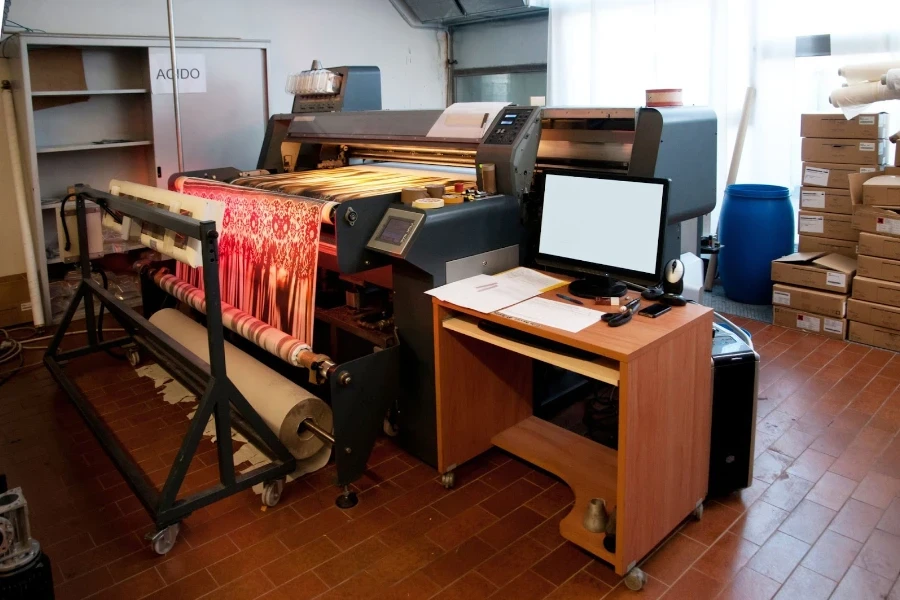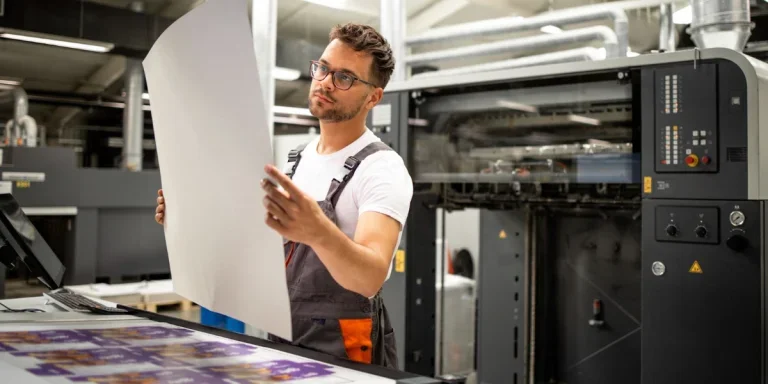Over the years, the printing industry has advanced significantly, with new technologies making waves. Direct-to-garment (DTG) and direct-to-fabric (DTF) are the two major printing methods, each with its own set of features and characteristics. However, selecting the best printing method for one’s business may take a lot of effort. This article discusses the key differences between the two methods to help readers understand which may be the best solution for their printing needs.
Table of Contents
The DTG and DTF printing market
The Primary differences Between DTG and DTF
DTG vs. DTF printing in a nutshell
The DTG and DTF printing market

The global digital textile printing market was worth USD 2669.9 million in 2022 and is projected to grow at a 14.4% compound annual growth rate (CAGR) between 2023 and 2030. In 2022, the DTF printing method accounted for more than 67% of the market share. Some of the key market players in this space include Amtex, Sun Chemical, Huntsman, DCC Print, and DuPont.
On the other hand, the DTG printing market was valued at USD 204.2 million in 2021 and is expected to grow at 19.5% CAGR to reach USD 710.6 million by 2028. The growing popularity of inkjet printers due to their low energy consumption levels and the decreased ink waste associated with DTG printers has all contributed to the growth of the DTG printing market.
What is DTG Printing?
DTG printing is digital printing onto a fabric that works similarly to a desktop printer. You must first feed the system with a digitized design, which will then be translated into a set of printer instructions by raster image processor (RIP) software.
Before printing, the fabric must first be treated with a unique solution. This solution keeps the ink from absorbing into the fabric while highlighting the colors of the inks. When the pretreatment process is finished, the fabric should be allowed to dry, which can be done with the help of a heat press.
Once the garment is ready, it is placed on the printer’s platen, where the ink is applied on the fabric’s surface using carefully controlled print heads to create unique designs. The most significant advantage of DTG printing is that it can print out complex designs with multiple colors at a record speed. It’s best suited for custom prints with fewer than 30 prints per order.
What is DTF Printing?
DTF printing uses digital inkjet technology like DTG to produce customized prints. The only distinction is that DTG transfers the design to the substrate using a unique transfer film. When applying the design to the garment with a heat press, a hot melt powder is put on the film to aid the ink’s adhesion to the fabric.
The most significant advantage of DTF printing is its low cost. All consumables, such as transfer films, inks, and hot melt powder, are inexpensive, keeping costs low while maximizing profits from prints. And since the printing is done on sheets or rolls of film, multiple designs can be printed on a single sheet or roll.
DTF is a versatile printing method as you can heat press the prints onto various substrates such as glass, ceramics, polyesters, and metals in addition to garments. Also, one can store extra prints for future use.
The Primary differences Between DTG and DTF
Although DTG and DTF printing appear to be the same, they differ in some ways. We distinguish the two processes based on the following four characteristics:
Quality
Each method, whether printing directly onto a garment or on a film, will have its own set of advantages and drawbacks. DTG is well-known for creating prints with a soft hand. Because the designs are created directly from the computer, and the inks are bonded directly onto the fabric, the designs are full-color and high-quality.
DTG printing allows for high-speed printing without sacrificing the quality of the prints. It can also create intricate designs with multiple colors, shading, and gradients. Furthermore, because the inks do not clog the fabric fibers, the garment remains as breathable as possible.
As the DTF process involves printing on a film which is then heat pressed onto the garment, the design transfers tend to have a plastic feel. This is especially true when printed on cotton garments, which are firmer and have a plastic-like finish. However, the print is indistinguishable for substrates such as polyester as it feels like it is a part of the substrate itself.
Production time
DTG printing is the slower of the two printing methods because it creates prints line by line. Most entry-level DTG printers can print 15-20 t-shirts per hour, excluding pretreatment time. One can bypass the pretreatment time by purchasing pre-treated garments beforehand.
A team of two with the right equipment and setup can complete a print run, from pretreatment to final heat press, in an hour and have 6-7 t-shirts ready. Additional workspace optimization can boost productivity to match the 15-20 shirts per hour statistic.
With DTF printing, the production time is faster as it can print multiple designs on a single transfer film. In most cases, one can print 60 transfer films with artwork within 30 minutes before applying the heat press to get the design onto the garment.
However, DTF printing requires manual labor because all printed films must be cut and separated. But, compared to DTG printing, the time required will be significantly less. DTF has a slight edge over DTG as it does not require pretreatment.
Durability
Durability is measured in terms of the washability and stretchability of a print. Washability refers to how well a print holds up after multiple washes in the washing machine, while stretchability refers to how well a print returns to its original shape after being stretched several times.
The garments used for DTG printing are considered durable after being properly cured and treated. If the user is extra careful, they may last up to 50 washes or longer. However, the type of fabric and ink used have an impact on durability. It is common for the prints to develop tiny cracks and fade over time.
The type of ink used, curing method, and pretreatment solution are all factors that influence how resistant a print is to wear and tear. A double heat press can improve the print’s durability by ensuring the inks are set into the substrate.
DTF prints are much more durable and resistant to tearing and damage. They are also more durable in the wash than DTG prints, especially if the user takes good care of the garments. A second heat press can benefit even DTF prints.
Applicable material
DTG printing is best suited for 100% cotton materials, whereas DTF printing works well with a variety of fabrics, including polyester, leather, nylon, cotton, 50/50 blends, and darker and lighter materials. DTF printing can also be used on other surfaces, such as bags, shoes, glass, wood, metal, and luggage.
Upkeep costs
One important factor to consider when purchasing a printer is maintenance cost. Both printing methods have more or less similar service cycles. However, white ink is the main source of issues when printers are concerned, and DTF printers have an advantage as they require much less white ink than DTG printers.
Basic maintenance, which entails devoting five minutes daily to cleaning, is sufficient to keep printers in good working order. This will include a routine print head cleaning cycle as well as gently shaking the ink tanks to prevent ink from settling and possibly clogging the printhead.
Even the best printers need routine maintenance to stay in working order, despite the common misconception that DTG printers are easy to use and are ready to go as soon as they are connected.
Both DTG and DTF printers must be kept in a clean room with adequate ventilation as part of their maintenance to ensure proper operation. Thus, different printers require different maintenance methods, and one must read the manual to understand the total requirements fully.
DTG vs. DTF printing in a nutshell
Despite their similarities, DTG and DTF printing have different purposes and applications. DTG printing is ideal for small-scale productions with complex designs and a wide color range. However, the initial investment may be high. DTF printing, on the other hand, is well suited for medium-to-large-scale productions of various materials. They are also more economical and environmentally friendly than DTG printing.




